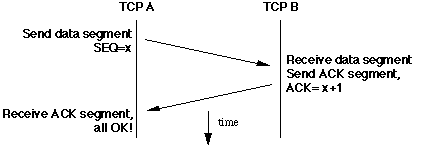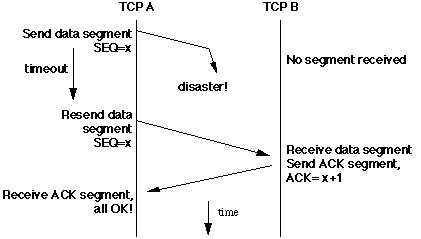previous |
start |
next
TCP Operation
When a segment is received correct and intact at its destination,
an acknowledgement (ACK) segment is returned to
the sending TCP. This ACK contains the sequence number of the last
byte correctly received, incremented by 1[3]. ACKs are cumulative -- a single ACK can
be sent for several segments if, for example, they all arrive
within a short period of time.

The network service can fail to deliver a segment. If the sending
TCP waits for too long[4] for an acknowledgment, it times out and
resends the segment, on the assumption that the datagram has been
lost.

In addition, the network can potentially deliver duplicated
segments, and can deliver segments out of order. TCP buffers or
discards out of order or duplicated segments appropriately, using
the byte count for identification.
[3] In effect, the
acknowledging TCP is saying: "I have received all bytes up to and
including byte x: I expect that the next byte I
received from you will be numbered x+1"
[4] The TCP timeout
algorithm uses observed round trip times, and measures of
their variability, to calculate a continuously updated best
estimate of when to resend. See the tutorial for a discussion on this.
previous |
start |
next
